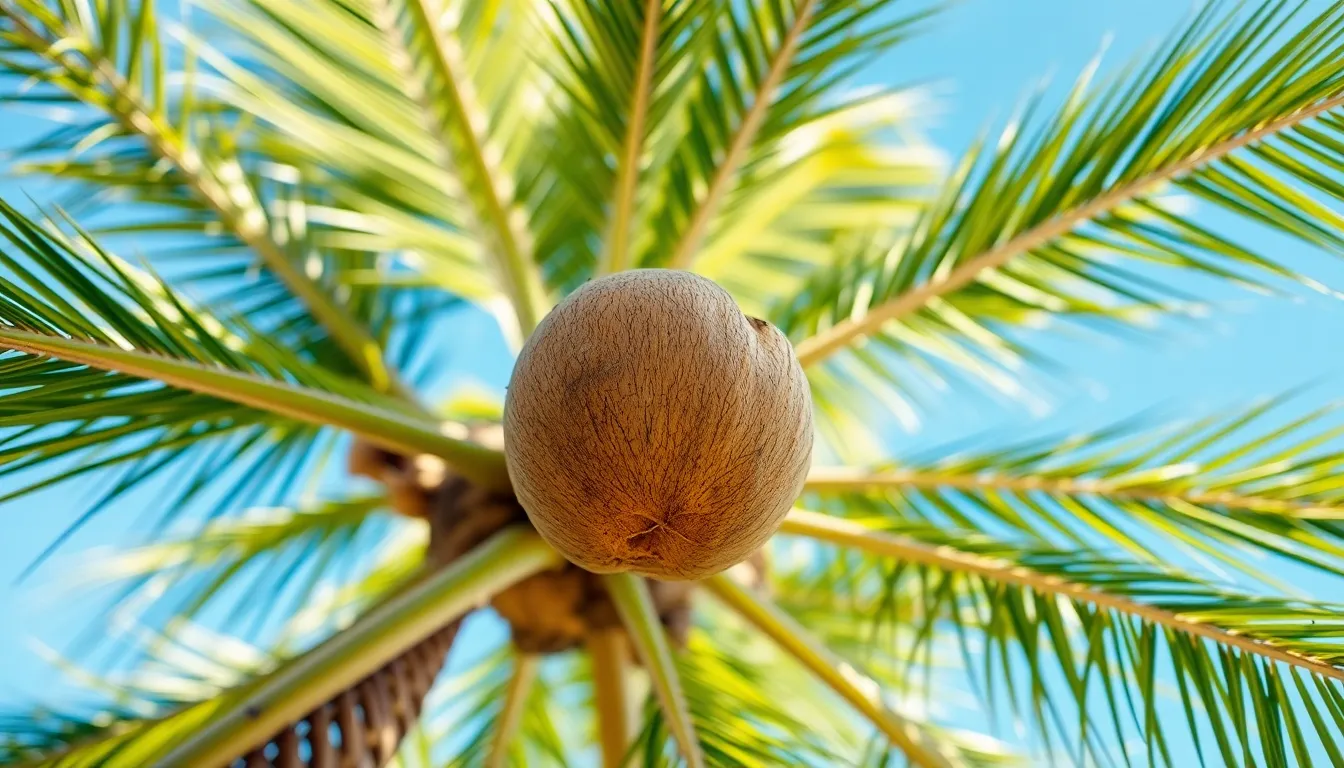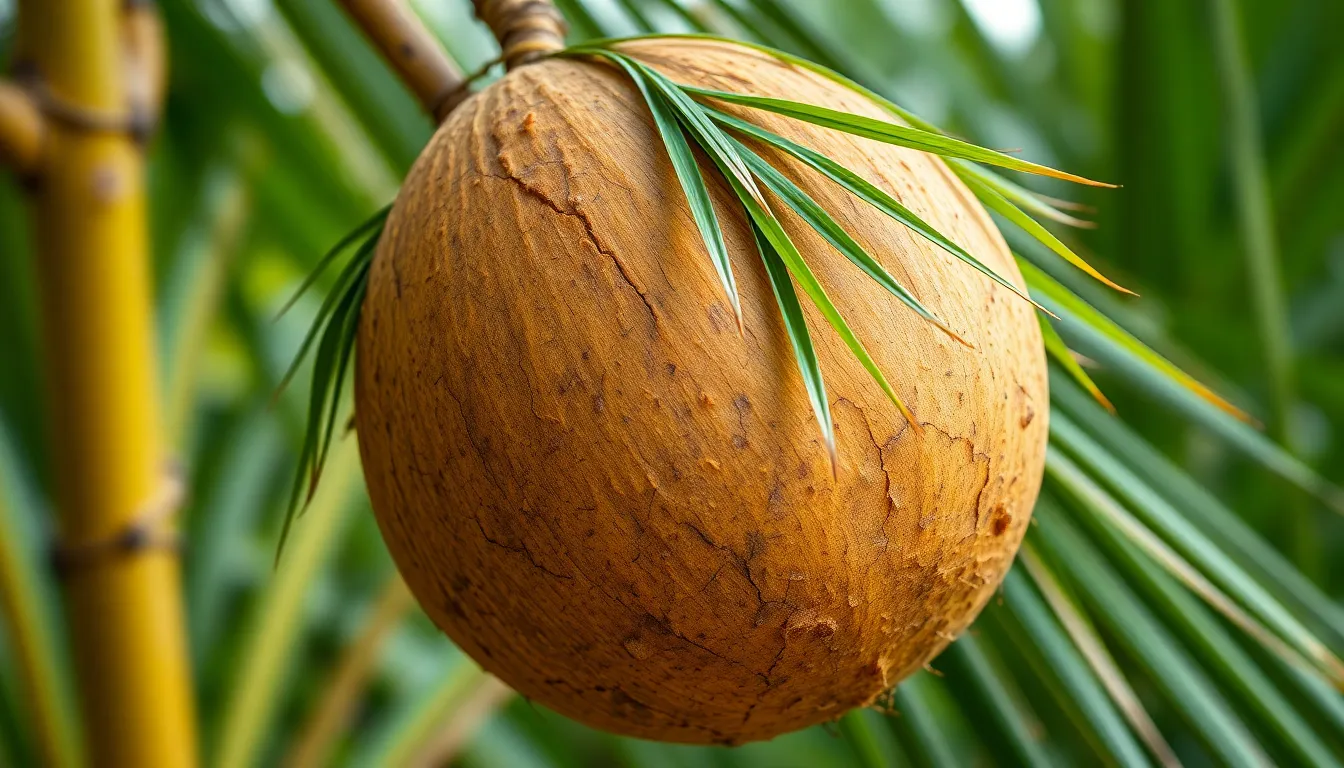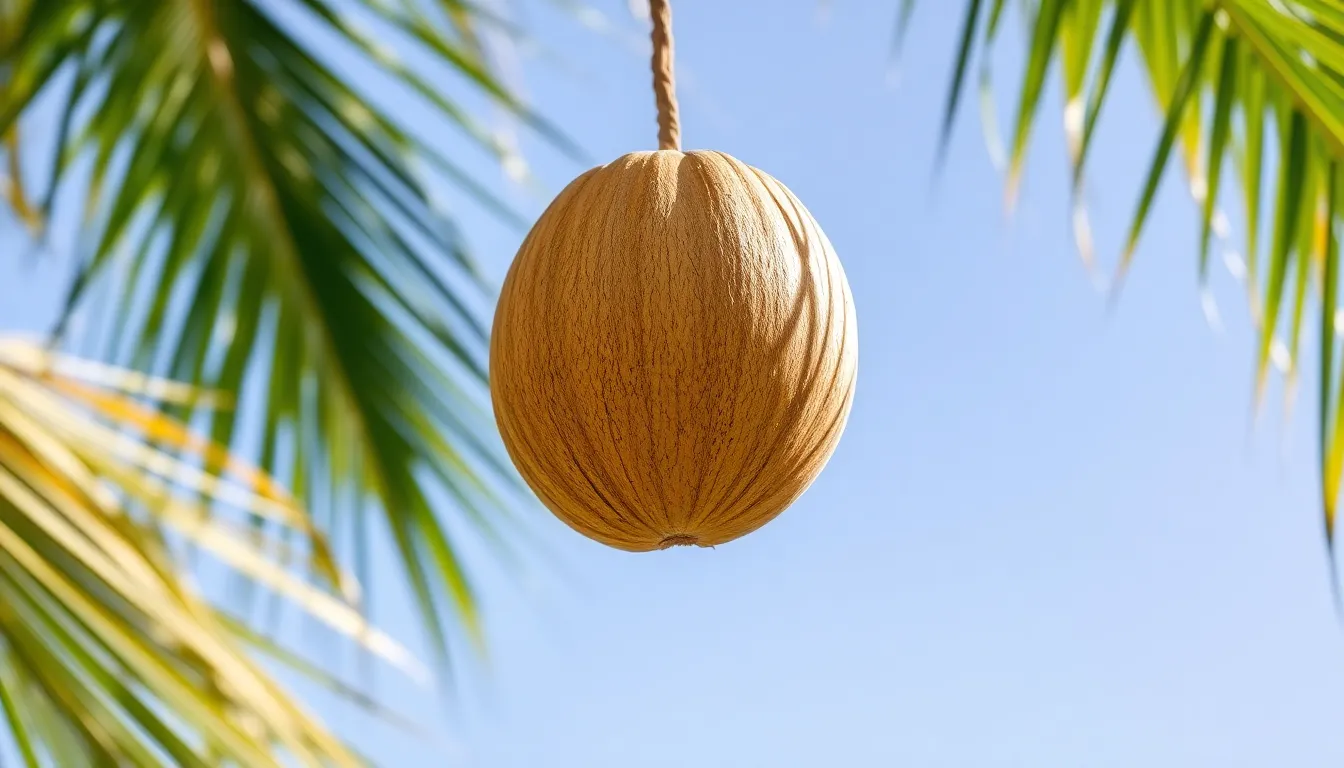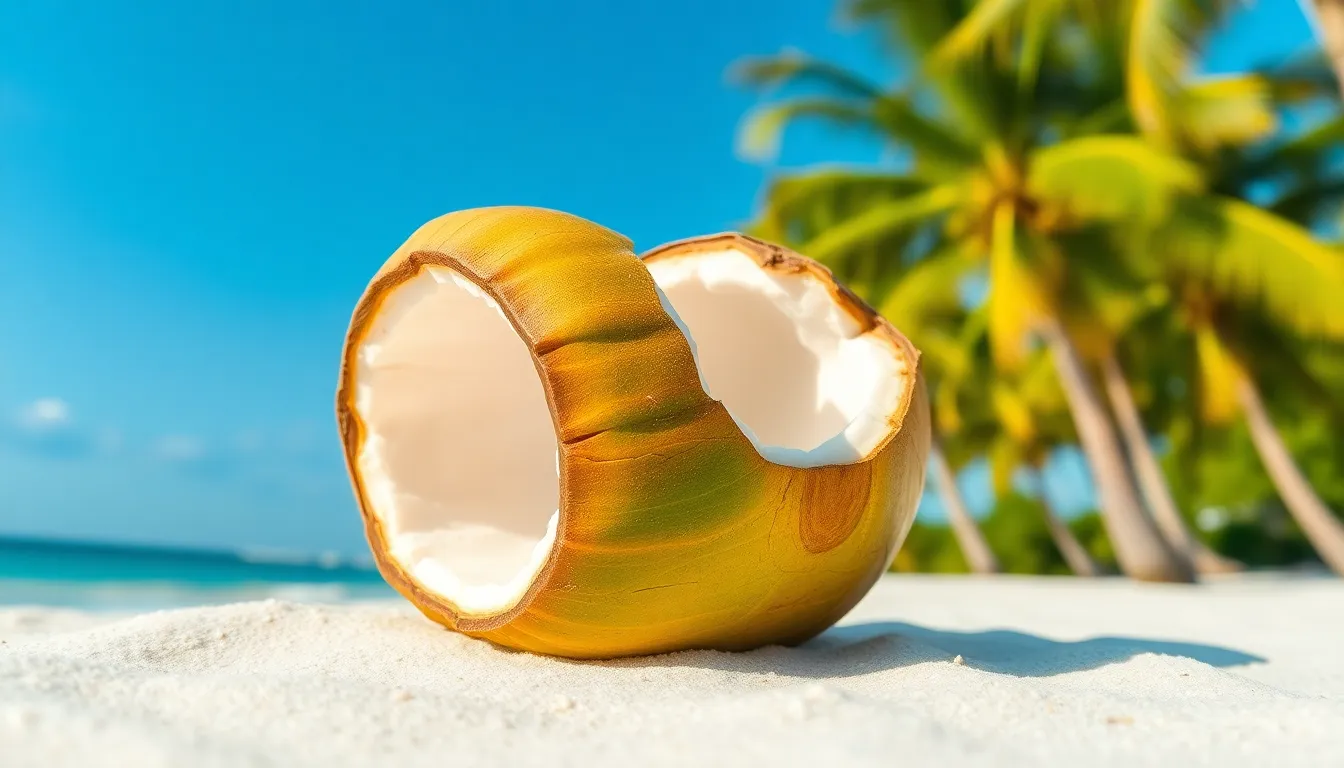Coconuts are more than just a tropical treat; they spark curiosity about their classification. Often mistaken for nuts, these versatile fruits play a vital role in various cuisines and cultures. Understanding what a coconut truly is can deepen appreciation for its unique characteristics and uses.
Botanically speaking, coconuts are classified as drupes, a category that includes other fruits like peaches and cherries. This classification highlights their structure, which consists of a hard outer shell, fibrous husk, and a seed inside. As they grow in tropical climates, coconuts not only nourish people but also contribute to diverse ecosystems. Unraveling the mysteries of this beloved fruit reveals its significance beyond the beach.
Table of Contents
ToggleWhat Is a Coconut Classified As
Coconuts are botanically classified as drupes, which are fleshy fruits with an outer skin, a hard stony covering enclosing the seed, and a seed inside. This classification distinguishes them from true nuts like chestnuts or acorns. The structure of a coconut consists of three main layers:
- Exocarp: The smooth, green or yellow outer layer.
- Mesocarp: The fibrous husk surrounding the shell.
- Endocarp: The hard shell that protects the seed, containing the white flesh and water.
The coconut’s hard shell aids in seed dispersal, allowing it to float on water and travel across oceans to new locations. Additionally, coconuts play significant roles in several ecosystems, providing food and shelter for various wildlife species. They are integral to numerous cuisines, contributing flavors and textures to a wide array of dishes and beverages.
Botanical Classification



Coconuts are botanically classified as drupes, belonging to the palm family. This classification reflects their unique structural characteristics and biological significance.
Family and Genus
Coconuts belong to the family Arecaceae, commonly known as the palm family. Within this family, they are classified under the genus Cocos. The full scientific name of the coconut is Cocos nucifera. This genus includes several related species, but Cocos nucifera is the most well-known and cultivated variety.
Species
Cocos nucifera is the primary species recognized as the coconut. Cultivars of Cocos nucifera vary significantly in characteristics such as size, shape, and maturity of the fruit. Notable varieties include the Tall coconut and the Dwarf coconut. These species exhibit adaptations to diverse environmental conditions, contributing to their spread across tropical and subtropical regions worldwide.
Common Uses of Coconuts
Coconuts serve multiple purposes in daily life, ranging from culinary delights to medicinal applications. Their versatility makes them valuable in various domains.
Culinary Uses
Coconuts feature prominently in numerous culinary applications. Coconut meat, which is the white edible part, adds flavor and texture to dishes like curries, salads, and desserts. Coconut milk, extracted from grated coconut, acts as a rich dairy substitute in soups and beverages. Coconut oil serves as a cooking oil, offering a high smoke point and unique taste. Shredded coconut appears in baked goods like cakes and cookies, while coconut water provides a naturally refreshing drink. In Pacific cuisine, both the meat and milk significantly enhance traditional flavors.
Medicinal Uses
Coconuts possess various medicinal properties recognized in traditional medicine. Coconut oil boasts antimicrobial, antiviral, and antifungal properties, assisting in skin health and wound healing. Coconut water contains electrolytes, making it an effective hydrator, particularly after strenuous activities. The anti-inflammatory and antioxidant qualities of coconut products support digestion and overall wellness. In some cultures, coconut husks serve as natural textile materials, applying their fibrous nature for various health practices.
Nutritional Profile
Coconuts provide a rich and diverse nutritional profile. They are primarily composed of carbohydrates, fats, and proteins, making them a unique food source.
| Nutrient | Amount per 100g |
|---|---|
| Calories | 354 |
| Protein | 3.33g |
| Total Fat | 33.49g |
| Saturated Fat | 29.72g |
| Carbohydrates | 15.23g |
| Dietary Fiber | 9g |
| Sugars | 6.23g |
| Vitamin C | 3.3mg |
| Iron | 2.43mg |
| Potassium | 356mg |
Coconuts are high in saturated fat, mainly medium-chain triglycerides (MCTs), which can be beneficial for energy and metabolism. The dietary fiber content promotes digestive health, making coconuts a wholesome addition to diets.
Coconuts also provide essential minerals such as iron and potassium. Iron aids in oxygen transport within the body, while potassium supports heart and muscle function.
Vitamins like vitamin C contribute to immune system health and skin vitality. These attributes position coconuts as a nourishing choice in a well-rounded diet.
Cultural Significance
Coconuts hold significant cultural value across various societies. They appear in religious rituals, traditional medicine, and culinary practices in many tropical regions. In Hindu culture, coconuts symbolize purity and fertility, often used in offerings and ceremonies. Their presence is a sign of prosperity and well-being, frequently appearing in weddings and religious events.
Coconuts also serve practical roles in community life. In Pacific Island cultures, every part of the coconut palm is utilized. Coconuts provide food, drink, and materials for shelter and handicrafts. Locals craft items such as utensils from the shell, and fibers from the husk are used for textiles and ropes.
Culinary significance is evident as well. In Southeast Asian cuisines, coconut milk features prominently in dishes like Thai curries and Indonesian soups. The sweet meat enhances desserts and snacks, while coconut water is valued for hydration. Festivals often highlight coconut-based dishes, showcasing their importance in social gatherings.
Coconuts’ role extends to sustainable practices as well. They contribute to agroforestry systems, promoting biodiversity and soil health. The coconut palm tends to thrive in coastal areas, making it a vital resource for communities facing environmental challenges.
Overall, coconuts embody a deep cultural heritage, showcasing their versatile use and the connection between people and their environment.
Coconuts are more than just a tropical delight; they represent a fascinating intersection of botany, ecology, and culture. Their unique classification as drupes highlights their complex structure and adaptability, allowing them to thrive in various environments. Coconuts contribute significantly to culinary traditions and health, offering a wealth of nutritional benefits and versatile uses in cooking and medicine.
The cultural significance of coconuts further enriches their value, serving as symbols in rituals and essential resources in many societies. Recognizing these attributes deepens the appreciation for coconuts, elevating them beyond a simple fruit to an integral part of ecosystems and human life.



